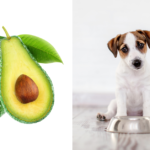Dogs can get sunburn on their nose, especially breeds with light-colored skin or short coats. The nose and ears are highly sensitive because they lack protective fur. Prolonged sun exposure can cause redness, peeling, and discomfort. Using pet-safe sunscreen and limiting time in direct sunlight helps prevent sunburn-related skin damage.
What Is A Dog Nose Sunburn?
A sunburn is skin damage caused by ultraviolet (UV) rays. On dogs, the nose (especially the unpigmented pink part called the planum nasale) sits front and center, so it’s highly exposed. Yes, Can Dogs Get Sunburn on Their Nose—especially light-skinned, pink-nosed, or short-haired dogs.
Even black-nosed dogs can burn if UV is high, the nose is dry or cracked, or they’ve had recent irritation. Veterinary dermatology texts note “solar dermatitis” as a common issue on lightly pigmented areas like the nose, ears, and belly.
Why It Happens: UV Science And Risk Factors
Sunlight carries UVA and UVB. UVB triggers redness and peeling, while UVA penetrates deeper and adds to long-term damage. Studies in companion animal dermatology link cumulative UV exposure to changes like actinic dermatitis and, in severe cases, squamous cell carcinoma on sun-exposed sites. That’s why I take nose protection seriously.
Risk rises if your dog has a pink or spotted nose, thin hair on the muzzle, or an autoimmune skin condition like discoid lupus erythematosus (often called “collie nose”) that flares with sun. Breeds at higher risk include Bull Terriers, Dalmatians, Boxers, Whippets, Collies, and Pit Bull–type dogs. So, Can Dogs Get Sunburn on Their Nose? These groups say yes, fast.
UV index matters. Research shows sunburn can occur in as little as 15–30 minutes at high UV index (8–10), especially near midday. Surfaces amplify exposure—snow can reflect up to 80% of UV, beach sand about 15–25%, and water 10–30%. That means a winter hike or lake day can still burn a nose.
Signs And Symptoms You’ll Notice
If you’re asking, Can Dogs Get Sunburn on Their Nose, watch for these early clues so you can act quickly.
- Pink to red skin on the nose leather
- Warmth or tenderness when touched
- Dryness, flaking, or crusts
- Tiny blisters or erosions in bad burns
- Pawing at the nose, sneezing, or head shyness
- Scabs that keep returning after sunny days
If you see persistent crusts, non-healing sores, or color changes, get a vet exam. Chronic damage needs professional care, not home fixes.
Dangers If You Ignore It
Repeated sunburn raises the risk of actinic keratosis (precancerous change) and squamous cell carcinoma on the nose and ear tips in dogs, according to multiple case series and reviews in veterinary journals. It also worsens autoimmune nasal diseases and can lead to infections from scratching. So, Can Dogs Get Sunburn on Their Nose? Yes—and it can become a serious medical issue.
Prevention: Simple, Vet-Approved Steps
I follow a layered plan because it works in the real world. Can Dogs Get Sunburn on Their Nose? They do—so I block UV in several ways.
Shade And Timing
Plan outdoor time before 10 a.m. or after 4 p.m., especially on UV index 6+. Use apps that show real-time UV. Take shady routes, rest under trees, and use pop-up canopies at the beach.
Dog-Safe Sunscreen On The Nose
Use a pet-formulated sunscreen labeled for dogs, fragrance-free, and free of zinc oxide, salicylates, and PABA (these are unsafe if licked). Aim for SPF 30+ equivalent, apply a thin film to the nose 15 minutes before sun, and reapply every 2 hours or after swimming. A 2020 veterinary review noted better protection with frequent reapplication versus one-and-done.
Protective Gear
Try a dog sun hat with a brim and UPF-rated snoods or visors that shade the muzzle. UPF 50 fabric blocks about 98% of UV. This is great for high UV days or snow trips.
Training And Habits
Teach a calm “chin rest” so your dog holds still for nose sunscreen. Reward after application. Keep a tiny travel stick in your leash bag so you never skip it. Small routines beat big burns.
Safe Sunscreen For Dogs: What To Use And Avoid
Can Dogs Get Sunburn on Their Nose? Yes, so product safety matters. I avoid human sunscreens with zinc oxide, which is toxic if ingested and can cause vomiting and anemia. I also avoid PABA and salicylates. Many pet-safe formulas use physical blockers like titanium dioxide and non-toxic emollients that are safer if licked in small amounts.
Do a spot test on a small area of the nose edge first. If you see redness or swelling within 24 hours, switch products and ask your vet. For extremely sensitive dogs or those with DLE, I prioritize shade and UPF gear and use vet-prescribed topicals over store sunscreens.
What To Do If Your Dog’s Nose Is Sunburned
If you’re here because you noticed redness, follow these steps right now. Can Dogs Get Sunburn on Their Nose? Yes—and quick care helps.
- Move to shade immediately and cool the nose with a soft, damp, cool (not icy) cloth for 5–10 minutes.
- Offer water. Avoid further sun for 48–72 hours.
- Do not use human sunscreens, essential oils, or aloe with aloin (toxic if licked).
- You can use a vet-approved, pet-safe aloe or hyaluronic gel if your vet has okayed it.
- Prevent licking with a soft cone if needed so the skin can heal.
- Call your vet if you see blisters, open sores, fever, or pain, or if redness lasts beyond 24–48 hours.
For moderate to severe burns, vets may prescribe topical antibiotics, steroid creams, or pain relief. Follow directions exactly.
FAQ’s
Can Dogs Get Sunburn on Their Nose Even If It’s Black?
Yes. Black pigment helps, but it’s not perfect. High UV, reflection from snow or water, and a dry, cracked nose can still burn.
What SPF Should I Use On My Dog’s Nose?
Use a pet-formulated sunscreen roughly equivalent to SPF 30+ that is zinc oxide–free, PABA-free, and salicylate-free. Reapply every 2 hours.
Are Human Sunscreens Safe For Dogs?
Most are not safe because many contain zinc oxide or salicylates, which are toxic if licked. Choose dog-specific products or ask your vet.
How Do I Know If It’s Sunburn Or An Infection?
Sunburn shows sudden redness, warmth, and later flaking after sun exposure. Infections often include pus, strong odor, or worsening pain. If unsure, see your vet.
Can Repeated Sunburn Lead To Cancer?
Yes. Repeated UV damage is linked to actinic changes and squamous cell carcinoma on sun-exposed areas like the nose and ear tips.
Do Puppies Burn Faster Than Adults?
Often yes. Their skin is more delicate, and they may stay in the sun longer without resting in shade. Protect them carefully.
Does Winter Sun Still Burn A Dog’s Nose?
Yes. Snow reflects a lot of UV, so sunny winter days can cause burns. Use shade, UPF gear, and safe sunscreen.
Conclusion
So, Can Dogs Get Sunburn on Their Nose? Absolutely—and prevention is simple once you build the habit. Use shade and timing, apply dog-safe sunscreen, add UPF gear, and watch for early redness. Protecting the nose today helps prevent pain, infections, and even cancer down the road.
Try one change this week: pack a pet-safe sunscreen stick and practice a 10-second “chin rest” so application is easy. If you found this helpful, subscribe for more pet health guides or drop a question in the comments.
I’ve loved dogs all my life and have cared for many different breeds over the years. Here, I share simple tips, stories, and helpful advice for all dog lovers. Whether you’re a new pet parent or a lifelong dog fan, you’ll find something useful and fun on my site.


